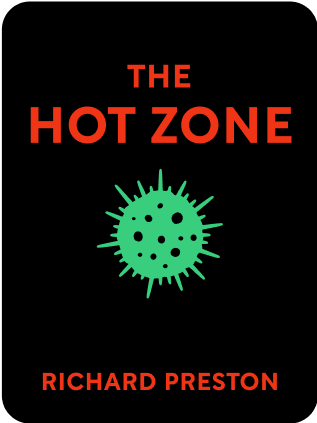

This article is an excerpt from the Shortform summary of "The Hot Zone" by Richard Preston. Shortform has the world's best summaries of books you should be reading.
Like this article? Sign up for a free trial here .
How does the CDC define Ebola? Does the CDC have guidelines on how to deal with Ebola?
To the CDC, Ebola is considered one of the most dangerous and deadly infectious diseases. The CDC named Ebola, and offered guidelines on how to deal with the disease.
Read more about the CDC, Ebola, and how they first recognized and classified the diease.
CDC: Ebola Gets a Name
The American Centers for Disease Control (CDC) was eager to get a sample of the nun’s blood as well. Karl Johnson, the head of the CDC’s Special Pathogens Branch—which investigated new and unknown viruses—called a friend at the English lab to ask for a small sample of the blood. For the CDC, Ebola was a major convern.
The English researcher agreed and sent a tiny amount of black, tarry blood in glass vials. Through electron-microscope photos, CDC researchers saw that the virus resembled Marburg, but it tested negative for Marburg and other known viruses. They were facing something entirely new. Johnson named the virus Ebola, because the outbreak happened around Zaire’s Ebola River.
Johnson and several other CDC doctors for Ebola flew to Geneva to tell the World Health Organization what they had found. Then the doctors continued on to Zaire and Sudan to try to stop the outbreaks.
When the doctors arrived in Africa, they discovered that villages had taken their own measures to limit the virus’s spread, including:
- Reverse quarantine, which entailed blocking the road leading to the village to prevent anyone from bringing the virus into the village
- Quarantining victims in isolated huts on the outskirts of the village, and, in some cases, burning the huts after the victims died
Presumably, these measures played a major role in preventing the virus from spreading further and sparking a major epidemic.
A Power Struggle Between the Army and CDC Over Ebola
While the Army researchers and leaders were forming their plan, they came upon the issue of politics. Congress charged the Centers for Disease Control (CDC)—not the Army—with protecting the country from disease. However, while the CDC had the authority to respond to this threat, the Army had the manpower.
The group felt that they had to move forward with their plan to contain this virus, regardless of the repercussions. They would assemble a biohazard SWAT team and sterilize the Reston monkey house.
The following day, General Russell met with members of the USAMRIID team and a couple CDC officials on Ebola, including Joe McCormick, the chief of the CDC’s Special Pathogens Branch. Dalgard, Virginia Department of Health officials, and officials from Fairfax County (where Reston is located) also attended.
McCormick had a history of tension with the Army, having publicly criticized Eugene Johnson for neglecting to publish the results of his Kitum Cave expedition after Peter Cardinal’s death. McCormick also had more field experience with Ebola than anyone in the room, and he was the only person there who’d worked with infected people.
McCormick had worked for days in a quarantine hut full of Ebola victims in Sudan, and—despite a close call—he hadn’t caught the virus. As a result, McCormick felt sure that Ebola was difficult to transmit and most likely not airborne, despite what Army officials were suggesting.
As the meeting went on, tensions rose. Russell finally proposed a compromise: At the CDC, Ebola was a huge concern. They decided that the CDC would be in charge of human-related concerns, and the Army would be in charge of the monkeys and the Reston facility. Everyone agreed.

———End of Preview———
Like what you just read? Read the rest of the world's best summary of Richard Preston's "The Hot Zone" at Shortform .
Here's what you'll find in our full The Hot Zone summary :
- The many different strains of Ebola, including the deadliest kind with a kill rate of 90%
- How scientists unraveled the mystery of a new strain of Ebola
- How Ebola could become airborne, becoming one of the deadliest viruses known






